Apartment safety tips
Updated November 1, 2021 . AmFam Team
You’ve put time, effort and care into transforming your apartment into a special place that’s uniquely yours. But preparing your apartment isn’t just about hanging up pictures and arranging your living room — you’ve got to take steps to ensure it’s as safe and secure as can be.
If you’re wondering how to protect your apartment from the unexpected, take a look at our list of apartment safety tips you can easily implement in your space.
How to make an apartment more secure
Keeping your space secure can be done without spending a lot of money. Follow these home security tips for apartments to find peace of mind whether you’re at home or on the go.
Reinforce sliding doors
Sliding doors typically have latch locks that are weaker than normal door locks. If you have a balcony or porch at your apartment with a sliding door, not only should you always have it locked, but use a rod along the tracks to reinforce its security. Taking the time to make sure these easily forced open doors are secured properly may save you from a potential break in.
Be smart about leaving windows open
It’s always nice to enjoy the fresh breeze from open windows but be extra mindful to lock them up if you’re leaving the apartment or going to bed — whether you’re on the first floor or above. Similar to bolstering your sliding door, find a rod that fits on the tracks of your windows for additional protection for your apartment.
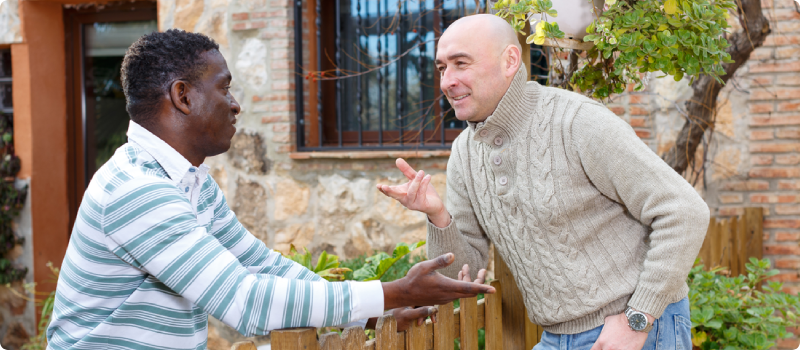
Meet your neighbors
Not only is knowing your neighbors convenient when you need a cup of sugar, but it’s a good idea to at least know who’s living in such close proximity to you. Don’t be hesitant to ask them questions about crime and security in the neighborhood. A great apartment safety tip is to ask a trustworthy neighbor to help keep an eye on your place if you plan to be away for a longer period of time.
Get creative with hiding spots
There is such a thing as being obvious when hiding your valuables in your apartment. Get clever and place things where people won’t think to look, including:
- Cereal boxes
- With your cleaning supplies
- Baggies in your freezer
Just keep track of where you’ve hidden your valuables! And, if you have a lot of cash laying around, get it to the bank right away. The same goes for other small valuables and sensitive documents — consider getting a safe deposit box at your bank.
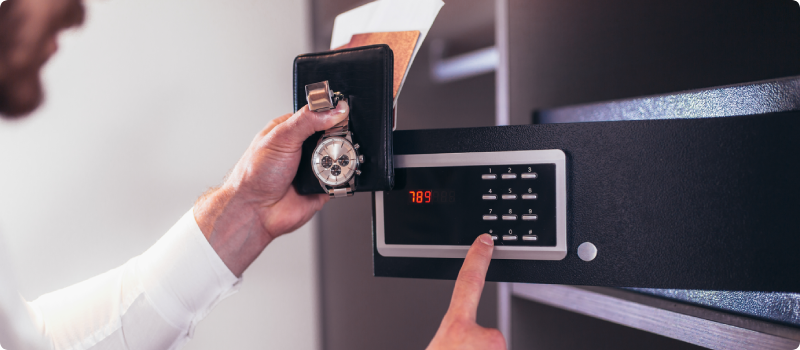
Use a fire-proof safe to protect valuables and documents
A fire-proof safe can help keep valuables and important documents, like a passport, insurance documents, social security card and some jewelry, safe from theft. This type of safe also helps to ensure that your valuables will be protected from fire and other disasters too. Fire-proof safes may need to installed in your apartment by a professional, so be sure to check in with your property manager before getting one.
Close the curtains in your apartment
Remember to close your curtains at night or when you’ll be away from home for a long period of time. Keeping your blinds and curtains closed is a simple, yet effective way to protect your electronics and valuables — it will prevent people from sneaking a peak and eyeing up your belongings. It also prevents people from seeing that you aren’t home.
“Be home” even if you’re not
Our next apartment safety tip is creating the illusion of you being home. If you’re leaving your apartment, whether it be for the day or a number of days, leaving a lamp on, setting timed lights and having your TV on with the volume up all give the facade that you’re home — this could definitely help ward off potential break-ins.
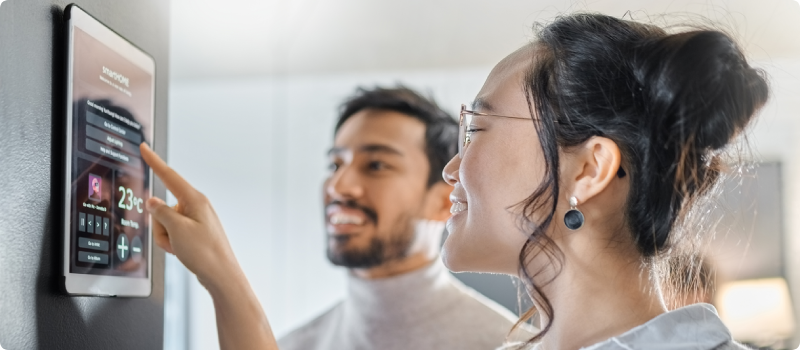
Look into smart home safety
Even as a renter in an apartment, you can enjoy the benefits of smart home technology. From internet-connected smart cameras to smart smoke detectors — both which can connect and send alerts to your phone — you’ll feel safer and more secure having some form of a smart tech system in your apartment.
Get more details on smart home technology for renters to see how devices like these can help give you a sense of security whether you’re in your apartment or on the go.
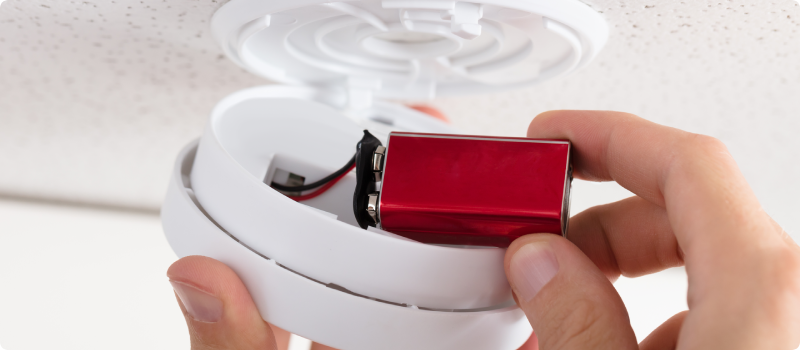
Protecting your apartment from harm
Making your apartment more secure to prevent theft is important, and equally important is making sure your home is protected from other forms of damage. Here are more ways you can keep your apartment safe.
Smoke alarms and fire prevention
Your landlord should ensure your smoke alarm is in working order, but be extra cautious and test your smoke alarms every so often. A smoke alarm should be replaced every ten years. If yours looks outdated, talk to your landlord about updating it. Learn more about home fire safety and how to prevent fires in your apartment.
Flood damage
Apartment flooding is often caused by leaks in faulty pipes, damaged appliances and natural causes like a hurricane or intense rainstorm. To keep your belongings that could be destroyed by water dry, consider storing them in high locations such as top shelves of closets or cabinets. Storing these items in waterproof storage boxes is a great option as well. If you live somewhere prone to flooding, consider purchasing a flood insurance policy.
Power surges
A power surge can be caused by a lightning strike, but it’s far more likely for one to be caused by a short circuit, downed power line or sudden change in electricity use. Any electronics plugged into your apartment’s walls can be damaged if a power surge occurs, so be sure to pick up surge protectors and power strips with surge protection.
For greater peace of mind that the electronics in your apartment will be protected, consider adding equipment breakdown coverage to your renters insurance.
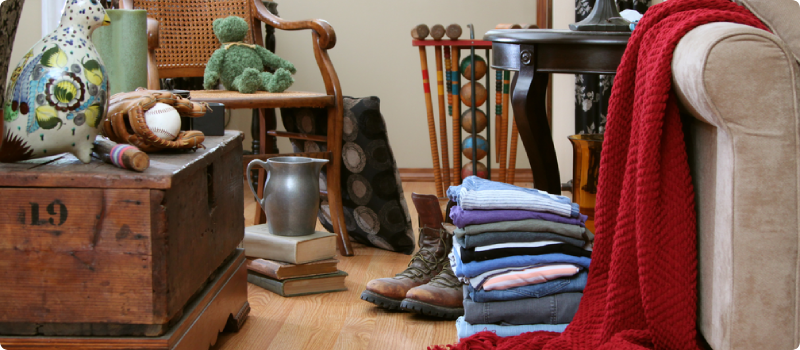
Protect your apartment with renters insurance
One of the best ways to protect your apartment? Renters insurance. Having renters insurance gives you the protection you need and the peace of mind you deserve. It protects your apartment in a number of ways:
Personal property protection
Renters insurance helps cover the cost to replace your belongings if they’re ruined from smoke damage, fire, theft or other covered events. You might think your landlord’s insurance covers your things under these circumstances, but actually, they typically aren’t responsible for covering any expenses apart from damages to their building.
Liability protection
Another feature of renters coverage is liability insurance. Liability coverage protects you if you’re responsible for injuries to guests or damage to your rental. It’ll help you pay for property damage, first aid, medical and court costs should an accident happen in your rental. No matter what steps you take to make your apartment a safe place, there are exposures that put you at risk if you don’t have the appropriate liability amounts in place.
Protection while you’re on the go
Renters insurance even covers your personal property basically anywhere you travel. This means whether your destination is a short walk to a convenience store, a drive across town or a flight to the other side of the country, your renters insurance acts as an invisible shield around you and your possessions. Find out more about renters insurance on the go.
Make these simple safety adjustments and you’ll be taking the right steps to keep your apartment secure. There’s a lot you can do to stay protected at the place you call home — begin by talking to your American Family Insurance agent about adding renters insurance.
And be sure to check out our renters and apartment resource hub for more great tips and advice on renters insurance and apartment living!
This handout is for informational purposes only and developed using generally accepted standards. This does not afford any coverage; or make any guarantees regarding safety or damage.
This information represents only a brief description of coverages, is not part of your policy, and is not a promise or guarantee of coverage. If there is any conflict between this information and your policy, the provisions of the policy will prevail. Insurance policy terms and conditions may apply. Exclusions may apply to policies, endorsements, or riders. Coverage may vary by state and may be subject to change. Some products are not available in every state. Please read your policy and contact your agent for assistance.

